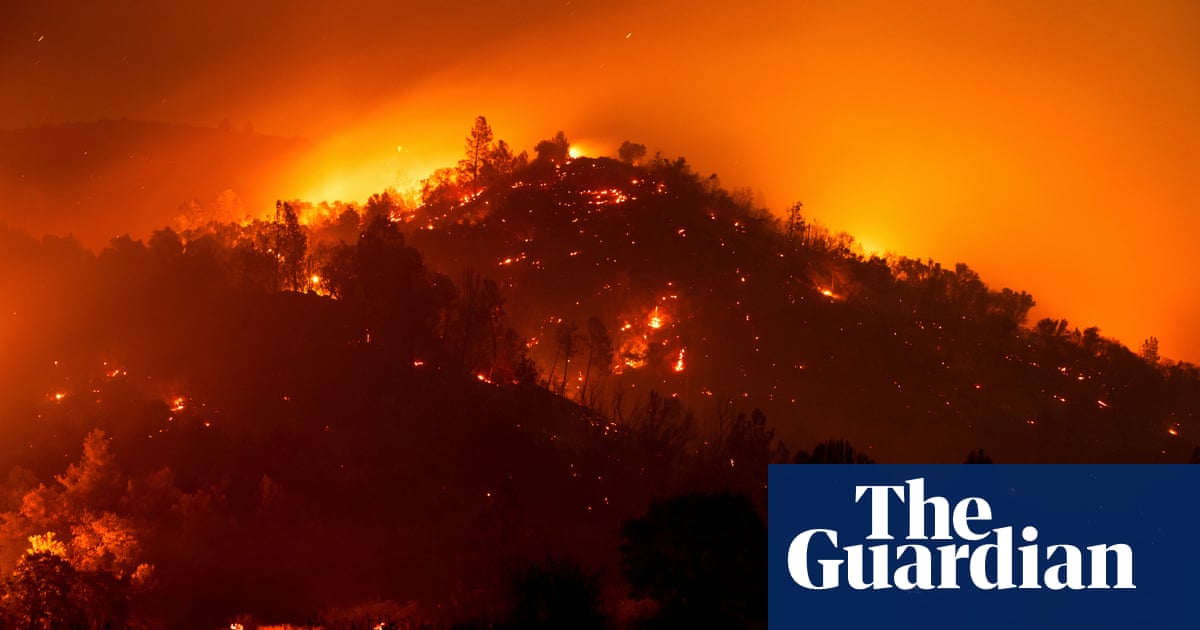Category 4 Hurricane Beryl pounding Jamaica » Yale Climate Connections

Hurricane Beryl was delivering a severe pounding to Jamaica on Wednesday as the storm slid along the southern coast of the island. Beryl has the potential to be one of Jamaica’s top-three most damaging hurricanes in history, along with Hurricane Gilbert of 1988 ($2.5 billion in inflation-adjusted damage) and Hurricane Ivan of 2004 ($920 million).
One of the homes that Beryl damaged in Carriacou Monday belongs to the parents of United Nations Climate Change Executive Secretary Simon Stiell, reported Al Jazeera. In a statement, Stiell said the climate crisis is worsening faster than expected.
“Whether in my homeland of Carriacou, hammered by Hurricane Beryl, or in the heat waves and floods crippling communities in some of the world’s largest economies, it’s clear that the climate crisis is pushing disasters to record-breaking new levels of destruction. Disasters on a scale that used to be the stuff of science fiction are becoming meteorological facts, and the climate crisis is the chief culprit.”
Outlook for Jamaica and Haiti
Despite high wind shear of 20-25 knots overnight, Beryl maintained its inner core, weakening only slightly. At 11 a.m. EDT Wednesday, Beryl was a Category 4 storm with 145 mph winds and a central pressure of 954 mb, headed west-northwest at 18 mph. Satellite imagery confirmed that Beryl had weakened some, with a more asymmetric shape and warming cloud tops. However, the eye was still intact, and a formidable area of heavy thunderstorms was bringing heavy rains to Jamaica and southwestern Haiti.
Since Beryl is moving parallel to the south coast of Jamaica, a slight wobble in the track can cause a significant difference in damage. Jamaica will be on the strong right-front side of the hurricane. A shift in Beryl’s track to the south could keep the peak winds of the eyewall just offshore, reducing the amount of wind damage by a factor of four or more, compared to a track that takes the eyewall onshore. But even if the eyewall misses the island, Beryl will still be capable of bringing a large storm surge in excess of six feet to the south coast, where the capital of Kingston (population 1.3 million) lies. Hurricane-force winds extend out up to 40 miles from Beryl’s center. With the storm located about 75 miles to the southeast of Kingston at 11 a.m. Wednesday, it appears likely that the eyewall winds will miss the city, but very likely affect the rural southwestern portion of Jamaica.
Regardless of Beryl’s exact track, heavy rains causing life-threatening flash flooding and mudslides will be a significant hazard on the island — and over southwestern Haiti (Fig. 1).

After Jamaica: the Cayman Islands
Beryl’s west-northwesterly track will bring it very close to Grand Cayman Island on Thursday morning. The top track models predict that the hurricane will pass 10-50 miles to the south of the island, putting it on the stronger right-front side of Beryl. The strength of the hurricane at that time will strongly depend upon how much the high mountains of Jamaica disrupt the hurricane’s inner core; Beryl could be between Category 1 and Category 3 strength at that time. See below for more background on the Cayman Islands’ history with hurricanes.
After the Cayman Islands: Mexico’s Yucatán Peninsula
Beryl’s west-northwesterly track is expected to bring it over Mexico’s Yucatán Peninsula on Friday morning, an area well experienced with hurricanes. Wind shear will continue to be moderate to high as Beryl approaches, so the hurricane should be weakening and most likely at Category 1 strength at landfall. Torrential rains and tropical-storm-force winds could extend as far north as Cancún even if Beryl arrives far enough south to avoid hurricane-level impacts there.
After the Yucatán: a Gulf of Mexico landfall in the U.S. or Mexico
There is still major uncertainty over Beryl’s longer-term future beyond Mexico that will not be fully resolved for a while. Beryl’s passage over the Yucatán Peninsula will take about nine to 15 hours, depending upon which portion of the peninsula it crosses. By Saturday morning, Beryl will be in the southern Gulf of Mexico, where conditions favor development. As an upper-level high builds over the western Gulf, a new upper-level wind pattern with low to moderate wind shear is expected. Record-warm waters for early July near 30 degrees Celsius (86°F) with a high ocean heat content will be present (though not as high as in the Caribbean), and the atmosphere will be moderately moist.
The long-range GFS and European ensemble model runs from early Wednesday (6Z) suggested that Beryl will move northwest into the western Gulf of Mexico on Saturday, then take a more northward track as it feels the influence of an upper trough dipping into the central U.S. Most ensemble members bring Beryl onto the northeast Mexican coast, but a substantial minority have a faster northward swing that would allow Beryl to reach the Texas coast (most likely toward the south end) around Sunday or Monday. This group of solutions is also on the stronger side. High surf and rip currents, and perhaps heavy rainfall, could affect a broad swath of the Texas coast toward the end of the long holiday weekend, depending on how far north Beryl ends up tracking.
Seventeen dead and devastating damage in the wake of Beryl’s first landfall
Beryl made landfall at 11:10 a.m. EDT Monday on the Windward Island of Carriacou (population 8,000), which is in the Grenadine Islands (but part of the nation of Grenada). Beryl was the second-strongest hurricane ever to make a landfall in the Windward Islands, which encompass the southern half of the Lesser Antilles Islands. Only Hurricane Maria’s September 19, 2017, landfall on Dominica (the northernmost of the Windwards) as a Category 5 storm with 165 mph winds was stronger.
Beryl is being blamed for 17 deaths: seven in the Windward Islands and 10 from flooding in Venezuela. Damage was heaviest on Grenada’s islands of Carriacou and Petit Martinique, where 98% of the buildings were severely damaged or destroyed; the electrical grid and the communications network were mostly destroyed.
After a helicopter tour of Carriacou, Grenada Prime Minister Dickon Mitchell said: “It is almost Armageddon-like, almost total damage or destruction of all buildings whether they be public buildings, homes or other private facilities. Complete devastation and destruction of agriculture. Complete and total destruction of the natural environment; there is literally no vegetation left anywhere on the island of Carriacou.” Drone videos from WXChasing on the two islands (see below) showed widespread severe wind damage, with a few areas of catastrophic damage. Structures at higher elevations on hills, where winds were likely up to 30% higher, suffered the most.
96L struggling with dry air
A tropical wave designated Invest 96L is spreading heavy showers through the Lesser Antilles Islands today as it speeds west to west-northwestward at 20-25 mph. Satellite images on Wednesday afternoon showed that 96L had a modest-sized area of heavy thunderstorms with poor organization.
Dry air and moderate to high wind shear will affect 96L this week, and the system is not likely to develop in the near future. In their 8 a.m. EDT Wednesday Tropical Weather Outlook, the National Hurricane Center gave 96L two-day and seven-day odds of development of 10% and 20%. There are hints in long-range ensemble modeling that 96L could encounter a more favorable environment next week, toward the end of the seven-day period, if it makes it into the Gulf of Mexico. The next name on the Atlantic list of storms is Debby.
Cayman Islands hurricane history
The worst hurricane in Caymans Islands history was Hurricane Ivan, which devastated the UK territory on September 12, 2004. At the time, Ivan was rated a high-end Category 4 storm with 155 mph winds. Though Ivan’s eye missed Grand Cayman, the severe right front quadrant of the hurricane’s eyewall pounded the island, bringing sustained winds in excess of 100 mph for seven hours. The peak winds measured on the island were just below Category 5 strength, according to the National Hurricane Center storm report: sustained at 150 mph, gusting to 171 mph. A storm surge of 8-10 feet completely overswept the island, except for the extreme northeastern portion. Rainfall also reached 12.14 inches (308 mm) on Grand Cayman. On Cayman Brac to the northeast of Grand Cayman, Ivan produced wind gusts of 67 mph and 4.92 inches (125 mm) of rainfall.


An estimated 83% of the dwellings on Grand Cayman (which generally uses the tough South Florida building codes) were damaged, including 4% that were destroyed, 70% that received severe damage from flooding or winds, and 26% that sustained minor damage from partial roof removal, low levels of flooding, or impact with floating or wind driven hurricane debris; 8,500 cars were also destroyed. Power, water, and communications were disrupted for months. Two people were killed in the Caymans, 402 were injured, and damage was $5.3 billion (2023 dollars), which was estimated by the United Nations ECLAC team to be 183% of GDP. Grand Cayman began a major rebuilding process and within two years its infrastructure was nearly returned to prehurricane status.
Only three other hurricanes have done more than $1 million in inflation-adjusted damage to the Cayman Islands, according to EM-DAT:
1) Ivan, 2004, 5.3 billion
2) Michelle, 2001, $99 million
3) Charley, 2004, $8 million
4) Lili, 2002, $2 million
We help millions of people understand climate change and what to do about it. Help us reach even more people like you.






